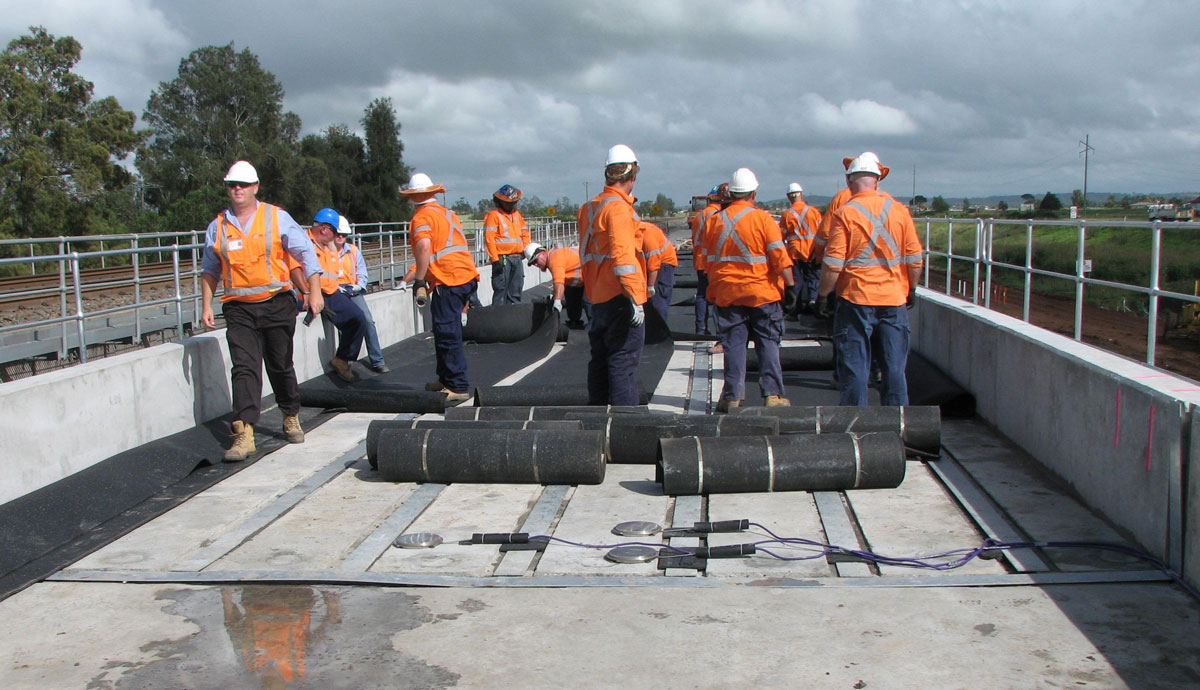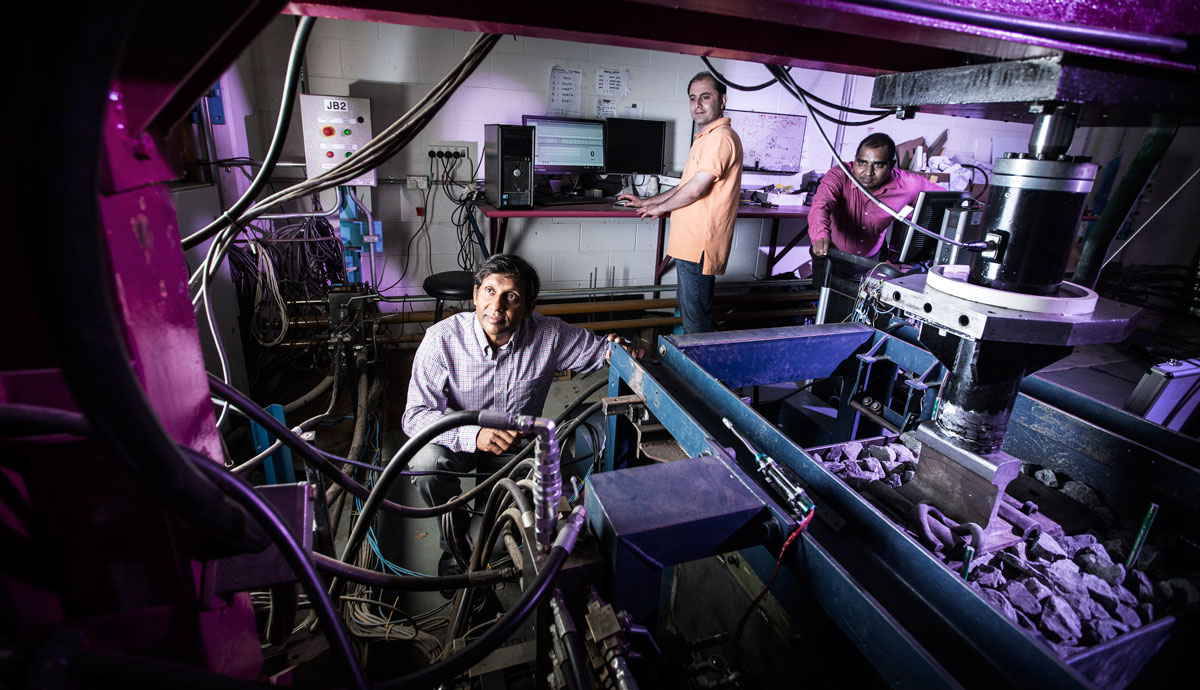October 16, 2015
Rail expert receives top honour at industry awards night
Career achievements in designing solutions for the rail industry have been recognised with the prestigious Railway Technical Society of Australasia (RTSA) Individual Award to Professor Buddhima Indraratna.
Professor Indraratna, a leading geotechnical engineering and rail infrastructure expert, was presented with the award by the State Minister for Transport and Infrastructure, The Hon Andrew Constance, at a combined Australasian Railway Association (ARA) and Railway Technical Society of Australasia (RTSA) Gala Dinner and Awards Night, held recently at the NSW Parliament House.
The annual RTSA Individual Award is presented to a person who has made an outstanding contribution to the railway industry in the Asia-Pacific region. RTSA, formed in 1997, is a technical society of Engineers Australia and promotes the science and practice of railway engineering and related technology.
The 2015 RTSA Individual Award to Professor Indraratna recognised his overall career achievement in providing outstanding engineering and technical services to the wider railway community, both nationally and internationally, as well as his research innovation and publication record.
Over a career at UOW that has spanned more than two decades, Professor Indraratna founded the Centre for Geomechanics and Railway Engineering and is a Program Leader of the ARC Centre of Excellence in Geotechnical Science and Engineering.
The award also acknowledges the impact of Professor Indraratna’s work with the rail industry, particularly for his innovations in ground improvement techniques for transport infrastructure.
His efforts have revolutionised track infrastructure in terms of design innovations and extended longevity, enabling faster trains carrying heavier loads.
At the award presentation, Minister Constance emphasised the imperative need for greater efficiency in Australian railways as a vital cog in the economy in its role as a major mode of transport and freight carrier.
Professor Indraratna in his speech acknowledged UOW, his past PhD students, and research associates and industry colleagues for their support and technical contributions over many years.
“Without their support, I would not be receiving this prestigious award today, and the unique and iconic rail testing facilities established at the University of Wollongong, including those for high- speed rail testing, will not have become a reality,” he said.

Professor Indraratna’s key career achievements in rail track design include:
Singleton Rail Track Project: In this project near Newcastle (NSW), geogrids and rubber shock-mats were installed to increase the life-cycle of the track and to reduce track degradation and excessive movement. An innovative way of measuring track movements involved the use of optical fibre placed in track and a novel structural frame to measure the lateral movement of ballast caused by the passage of trains.
Sandgate Railway Project: A world-first project in which a heavy-haul rail track was built on 30-metre thick and very soft estuarine clay in the Hunter region. Prefabricated vertical drains were installed to consolidate the soft clay to increase its load-bearing capacity, as well as to prevent mud pumping by reducing water pressure build-up caused by the passage of trains. This project led to scholarly publications in the American Society of Civil Engineers (ASCE) and countries including China have adopted similar design processes.
Port reclamation for infrastructure works: As part of the Port Kembla Outer Harbour reclamation works, a technique was developed in which coalwash and steel slag were blended and compacted to provide an effective load-bearing fill capable of supporting heavy-traffic transport corridors. The use of coal and steel industry waste as a structural fill has environmental benefits in reducing the volume of waste that would otherwise become landfill.
